There are times in travel when you just have to ‘go with it’. You don’t really understand what’s going on around you or why and no one can really give you any answers due to the language barrier. Heck, sometimes the locals don’t even know why something is done the way it is! So those are the times when you have to just sit back and watch.
Observe. Think. Keep an open mind. And Enjoy.
When we arrived in Nuwara Eliya we found a driver to take us into town from the train station. He was full of information about tours, and lodging, and then he mentioned something that really caught my attention. He mentioned that there was a festival/parade over in the next village that began at midnight and of course, I was intrigued. I love festivals! I guess this makes me a partier, but I like to think of it as an intense curiosity about other culture’s rituals.
I tried to inquire more about this so-called festival and was getting a lot of unclear answers. I got the feeling that the driver didn’t really know too much about it either except for where it was located. So the next day we hired the driver to take us to the festival to see what it was all about.
He tried to explain a little about it, but since he wasn’t from that village he didn’t really know very much about it either. It seemed that the timing of the festival had something to do with the full moon cycle, but that’s still rather unclear to me. One person referred to it as Perahera, which describes any colorful procession as far as I can determine.
Through a little conversation, some charades, and simply observing, we were able to figure out a few things about the festival. There was a celebration in the temple to kick off the procession. The special Gods were removed from the temple for the procession. For 24 hours there was a slow procession/parade around the complete area with 3 ‘floats’. Each float represented a different Hindu God. They very slowly went by each house of the village. Each household had a table set out of food, flowers, incense, and various other offerings. Once the float would come by the family would give the holy man on the float the offerings and the holy man would go through some offering ritual for the Hindu God. The parade would eventually end back at the village temple where it originally started. The Gods would be safely tucked away again inside the temple.
Yes – I know this is horrible journalism considering I’m not really sharing any facts and it’s all hearsay and speculation. But as I said, sometimes you just can’t get answers. I actually came back and googled various terms for this festival and could find nothing on it…not even a name of it. So – it still remains a mystery.
However, the real mystery and intrigue seemed to be us…the foreigners who surprisingly showed up in the middle of this procession with cameras. We were welcomed with open arms, it was overwhelming to have so much attention given to us. Everyone wanted their picture taken and wanted us to dance and eat the traditional foods/offerings. It was a real once-in-a-lifetime experience for us.
And yes…it yielded some great photos. Here are some of my favorites.
Can’t get enough?! Then view all of the Hindu festival photography:

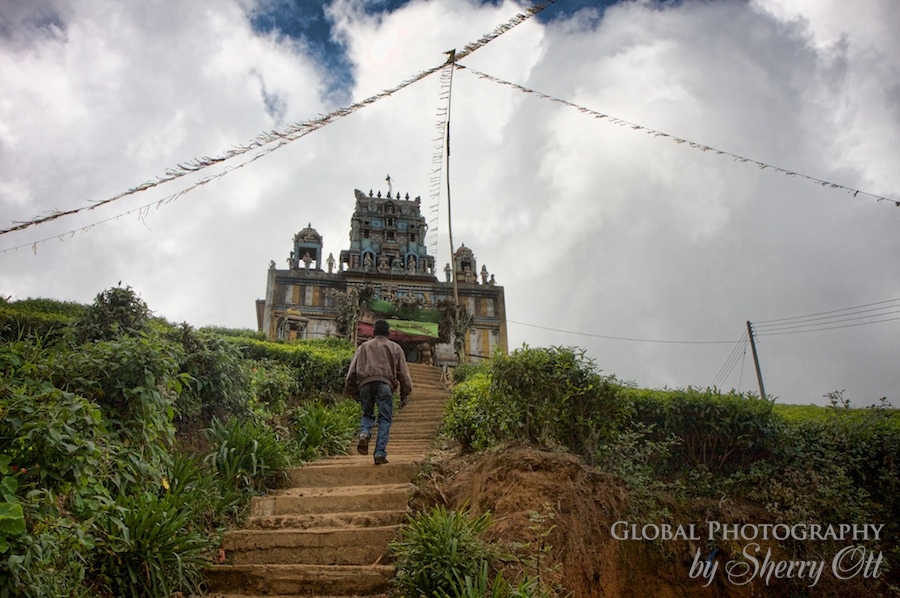
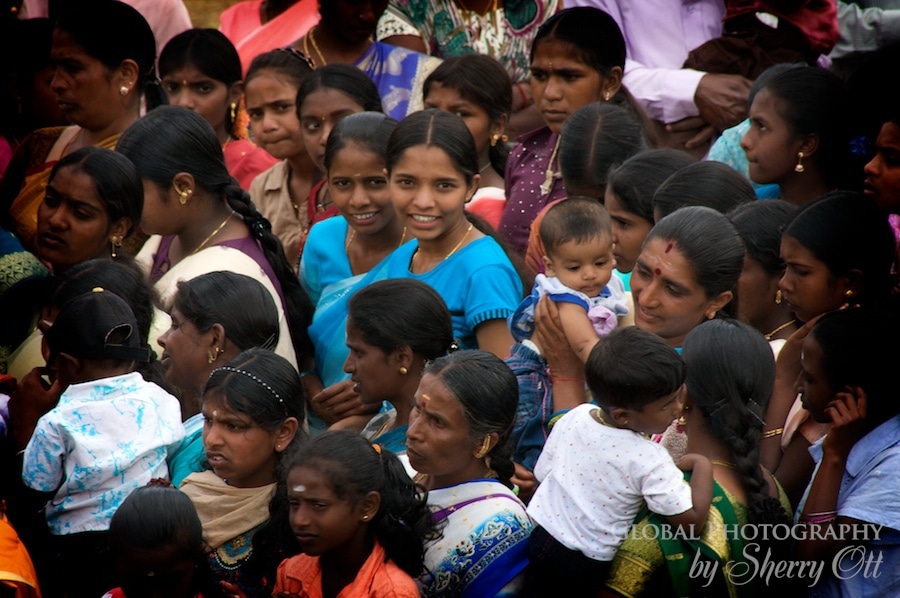
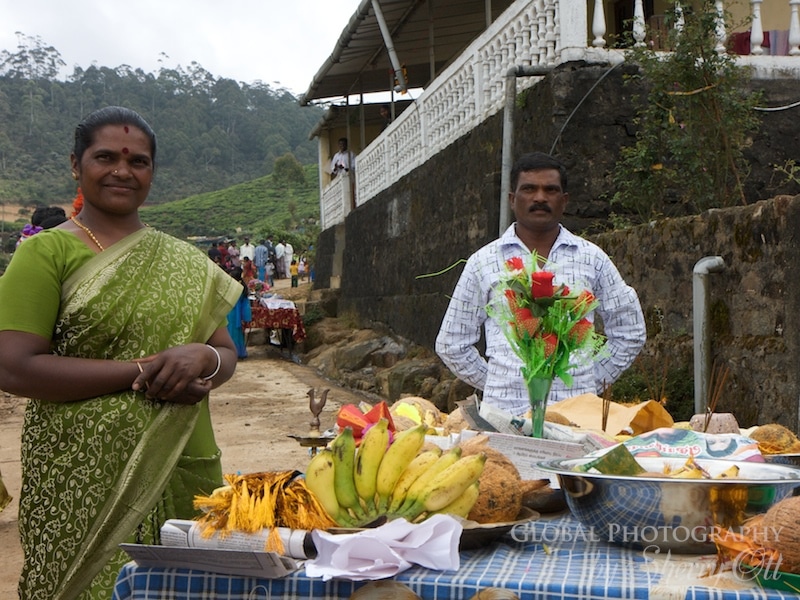
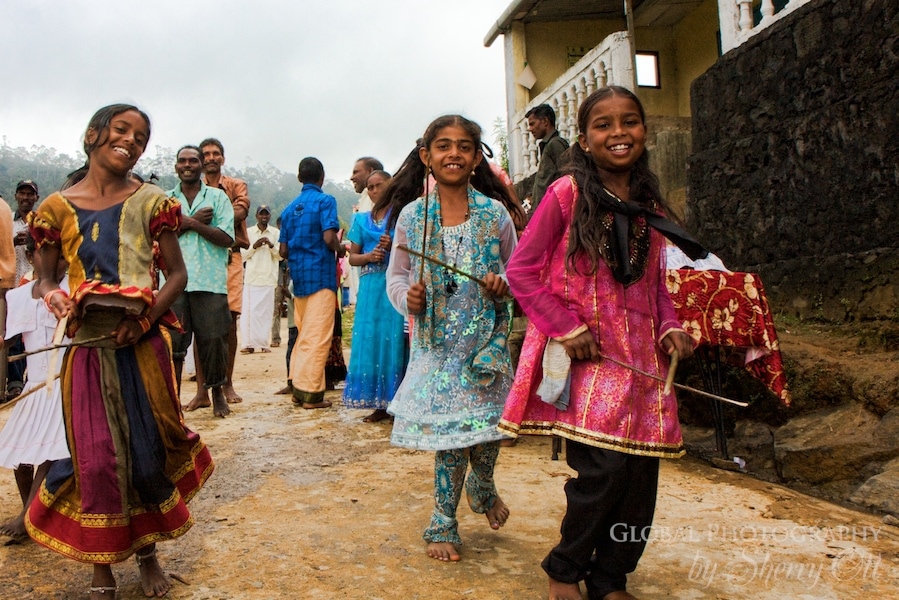
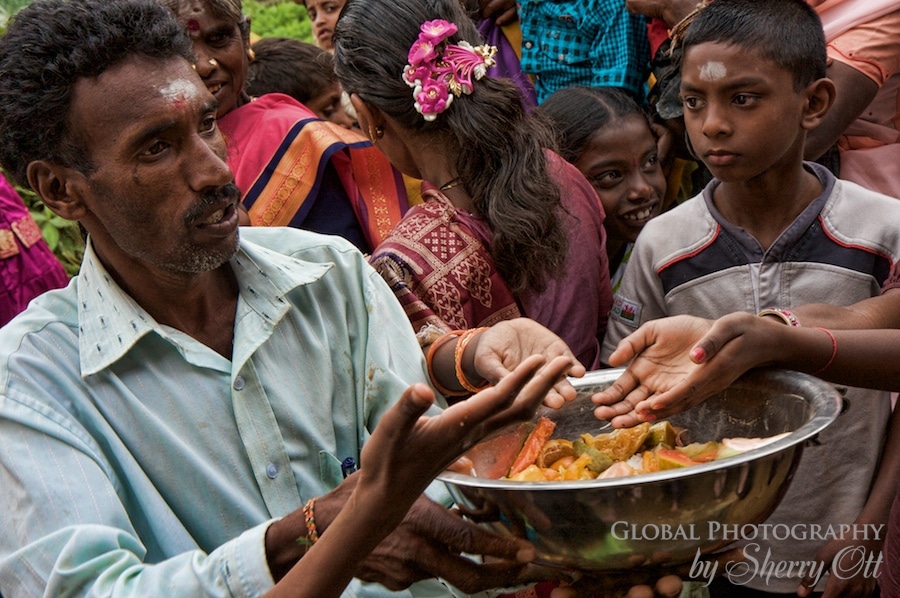
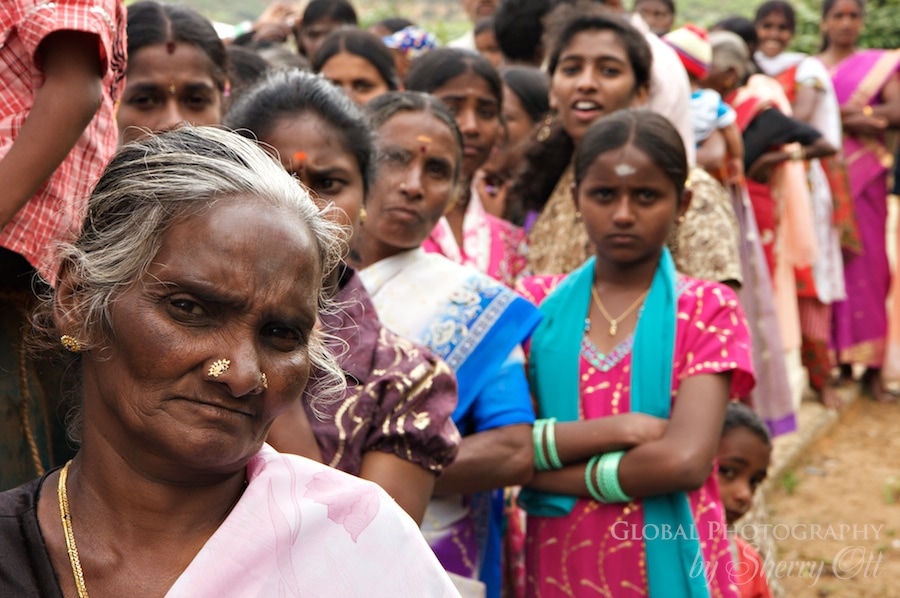
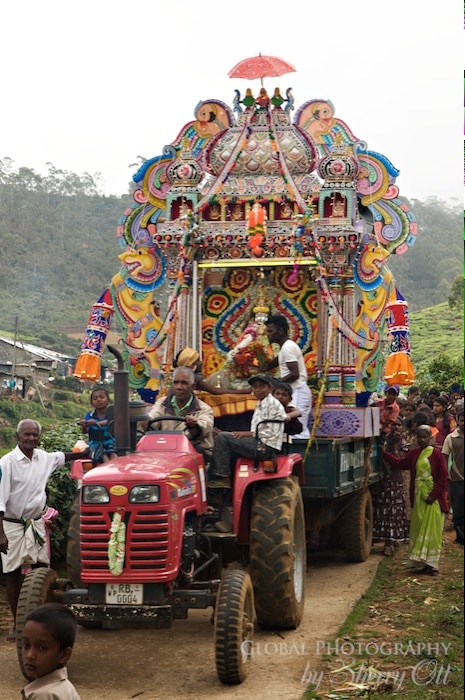
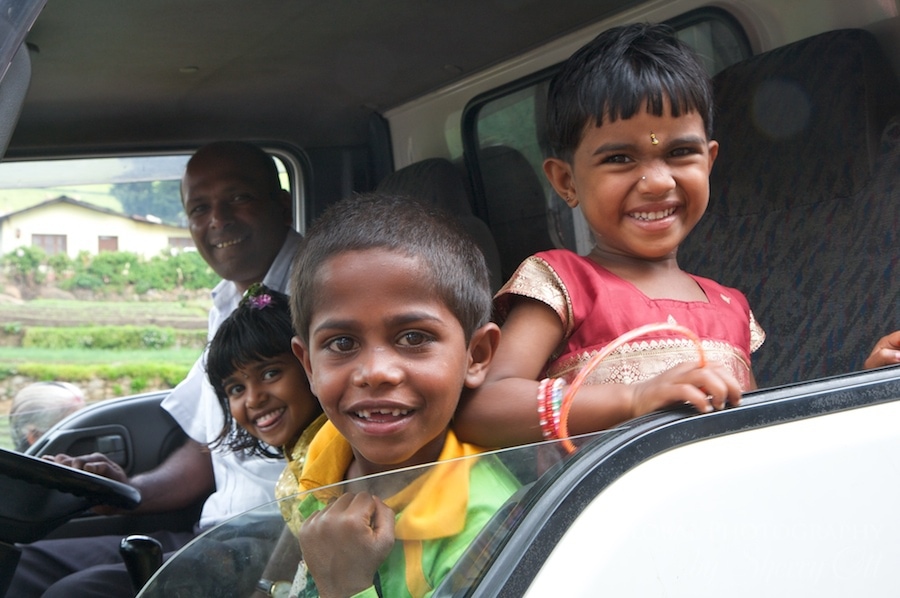
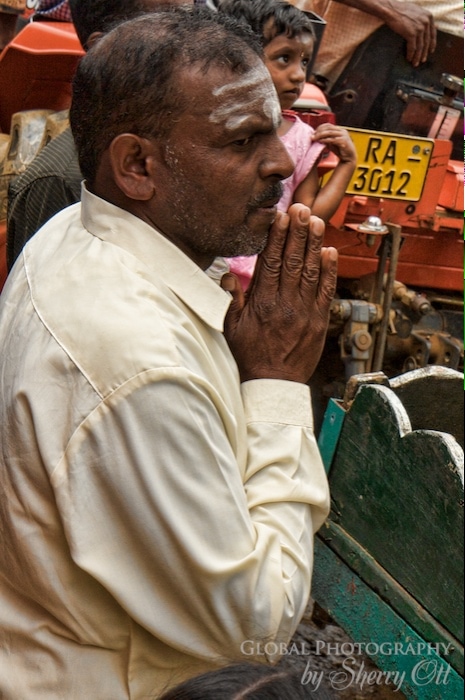
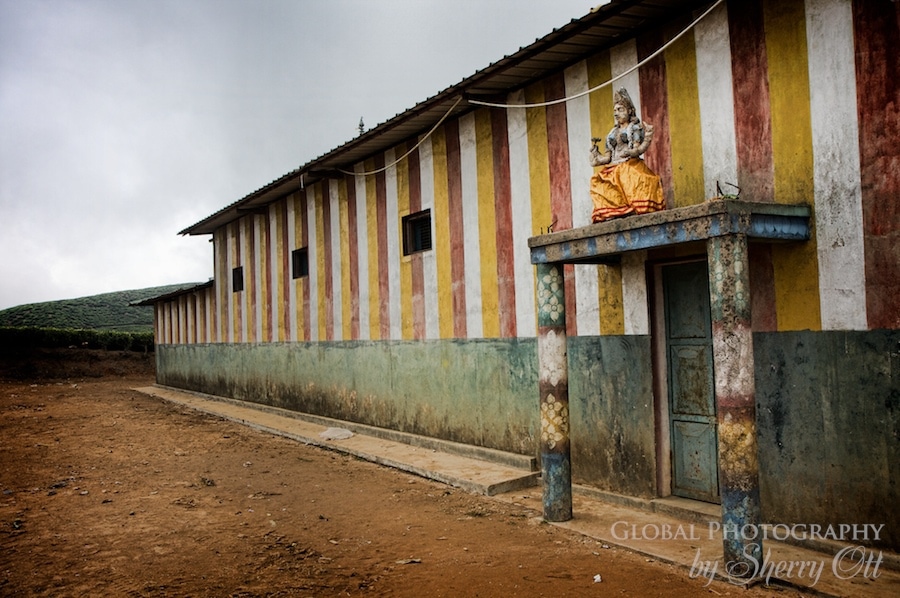

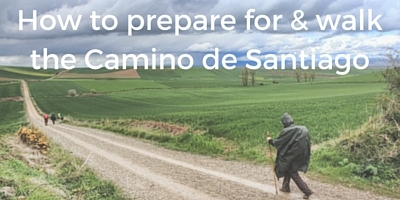

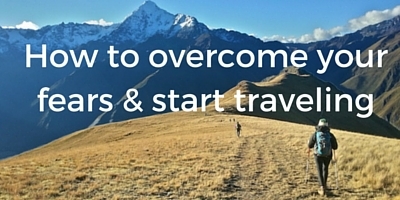

By Gillian @OneGiantStep May 17, 2011 - 8:40 am
Great pictures Sherry! I think the concept of ‘not knowing’ is the hardest for some of my friends here at home to understand. How could I be somewhere, in the middle of nowhere perhaps, and not know where I am, how I’m going to move, where I’m going to go, or what’s going on; but I think it’s one of the most freeing parts of travel…just letting go. Cheers!
By Mark H May 17, 2011 - 6:36 pm
Superb photos. I love the colour of the women’s outfits and jewellery that adds so much to the festival. While I’ve not been to Sri Lanka, India seemed to have festivals that just “happened” with little knowledge of those around it but plenty of passion anyway.
By Laura May 18, 2011 - 12:53 am
As always, beautiful photos. I love how strong the connection is with your subjects. I am still a bit intimidated to take people photos while traveling, but you seem to do it so well.
By Barbara Weibel May 18, 2011 - 3:51 am
Powerful observation = powerful photos. Amazing captures. And I love the fact that you just went on faith. That’s always the very best kind of experience – no expectations!
By Cathy Sweeney May 18, 2011 - 4:50 pm
Gorgeous photos that tell such an interesting story. “Observe. Think. Keep an open mind. And Enjoy.” — well said.
By Evi @evitravels May 24, 2011 - 12:02 pm
Wow, fantastic photos! Also love the advice to observe and think with an open mind. Great post.
By K.C. July 28, 2011 - 6:36 am
Probably I am the Only Sri Lankan that read Sherries article. I might be able to shed some light. While I am not a Hindu, I was brought up in the hill country where there are tea plantations and lots of small Hindu Temples (These are called “Kowila”).
This is usually an annual pageant. It is similar to the annual feast that happen in certain catholic churches.
It is the time for the township to receive the blessings of the Gods that dwels in the temple. So they would take the statues of the gods around the town and give blessings to each of the household.
(I believe this is linked to the Hindu cast system. As per the Traditional Hindu cast systems that low cast people are not permitted to enter the kowils. So this may be a once a year chance for the lower cast people to get blessings from the gods. This is my interpretation. I may be wrong)
Also, if you ware at the temple at the same time. You would find that the temple staff is cleaning the place where the statues were. They would wash the area. (With turmeric water) and make that place ready for the status to be placed when they come back.
I have seen rituals that they would do as a way to payback for a blessing that gods given. The Hindus would pears themselves with needles. Dance with a device called Kawadis (Which is supposed to be heavy) on the shoulders and often times would have a burning charcoal pit that would be used by the devotees walk across as a means of ritual.
Also a common occurrence during these festivals is that some of the believers would get in to a state of mind that would be similar to a religious hypnotic state. It could be a person that sitting on the side of the road watching the festivities, they would get in to a some sort of mental state that people would describe as a “possession” (but buy a good spirit). Then he/she would get in to the Perahera and dance through until they reach the temple or come out of the mental state. Very interesting phenomena to observe. (It used to scare me to the guts when I was small)
I would love to go back to those childhood places and look at them with my adult knowledge and perceptions and try to understand what they really mean.
But something is true… many people don’t understand the whole process. As any other religious activities there is hidden, subtle, political, socioeconomic aspects that is driven by the power and egos of the local communities. S
By Sherry July 29, 2011 - 5:52 am
A super explanation acbd I believe very accurate based on what we observed. Thanks so much for the knowledge sharing! So happy u found my site. Where do u live now?